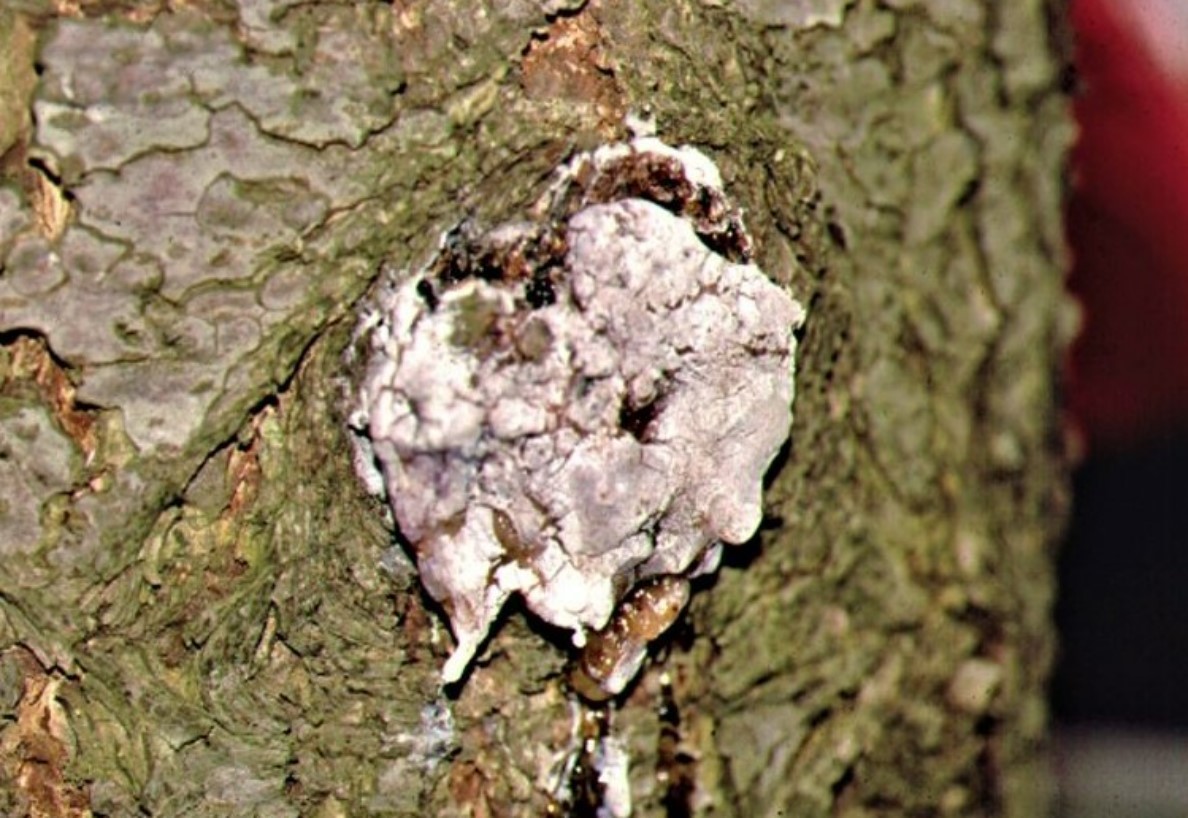The pitch mass borer (PMB), Synanthedon pini (Kellicott), a clearwing moth, primarily attacks the trunk and limbs of eastern white pine, but also injures scots, austrian, jack and red pine, along with white, Norway and Colorado blue spruces. Wounded trees, trees growing under stressful conditions, and those previously infested, are preferred. The caterpillar galleries cause defects, which lower the value of the tree for lumber. Abundant and repeated attacks can kill a tree.
The clearwing moth, which bears a resemblance to yellow jacket wasps, lays its eggs in midsummer in wounds, such as pruning cuts, and sometimes on the bark of the trunk or limbs. The larvae tunnel into the inner bark, where a cavity is excavated. They feed on resin exuded from the damaged tissue. The mature larvae reach a length of approximately 25mm. Their body colour is usually near white to pink depending on which tree they are feeding and the food supply. Their brown head is smaller than the prothorax. Due to their extended life cycle, different instar larvae are likely to be found at any one time. Characteristic, large accumulations of pitch and frass, sometimes as large as a small fist, form at the point of attack. New attacks tend to occur at old sites.
Pupation occurs within the pitch mss from late May to June. Larvae pupate at a position beyond the pitch, in order for the pupa to release the adult. The clearwing moths appear from the middle to the end of June, although others possibly emerge in July and August depending on the location. Two to three years are required to complete a life cycle.
Sign and Symptoms
- Pitch masses: One of the most obvious signs of PMB infestation is the presence of pitch masses on the bark of the tree. Pitch masses are small lumps or masses of tree sap that form around the holes where PMBs have burrowed into the tree.
- Entry holes: PMBs create entry holes on the bark of the tree, which can be identified by their small, round shape.
- Sawdust: PMBs create sawdust-like material around the entry holes as they burrow into the tree. This sawdust may be visible on the bark of the tree or on the ground around the base of the tree.
- Wilted or dying foliage: As PMBs damage the inner structure of the tree, the foliage on the affected branches may start to wilt, turn yellow or brown, and eventually die.
- Weakened branches: As PMBs continue to burrow and feed on the tree, the affected branches may become weakened and break more easily.
Prevention
- No chemical sprays are specifically registered in Manitoba for the control of the pitch mass borer. Chemical control is not considered effective.
- Severely infested trees should be removed.
Watering
- Because these borers attack stressed trees it is important to keep them healthy with general tree care practices., such as proper watering and fertilization. A healthy tree will be better equipped to withstand attack from the borer.
Pruning time
- Since wounded trees are particularly susceptible to attack by the pitch mass borer, it is important to minimize mechanical injuries to the trunk and limbs. Pruning trees during the egg lying period of the pitch mass moth should be avoided.

Tree Health Issues
Wondering about costs?

